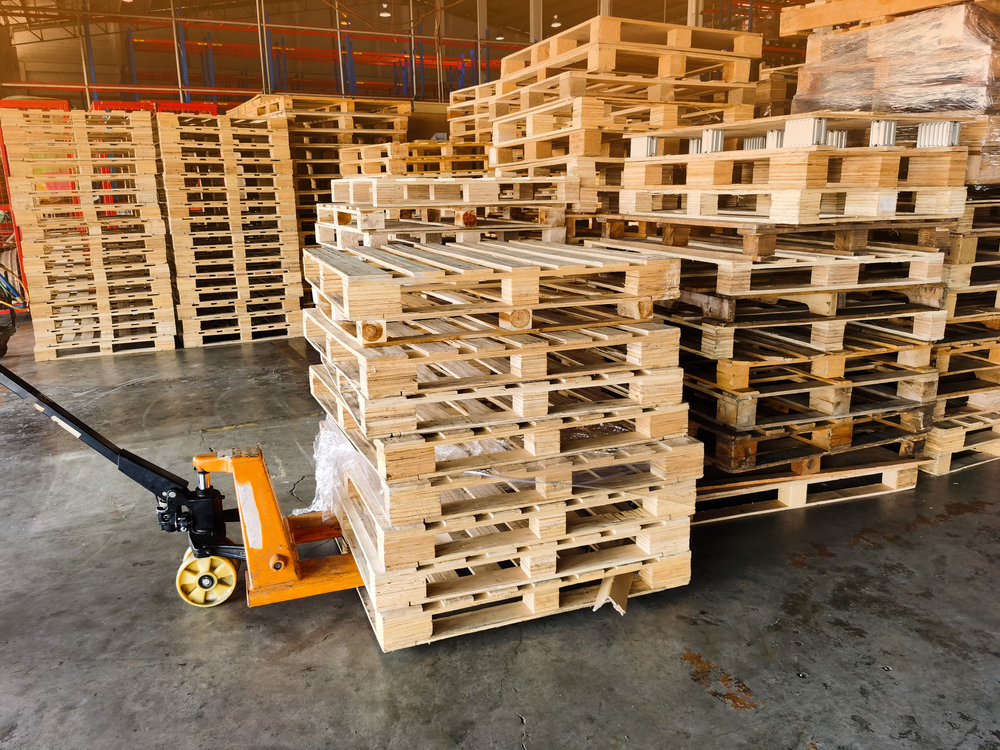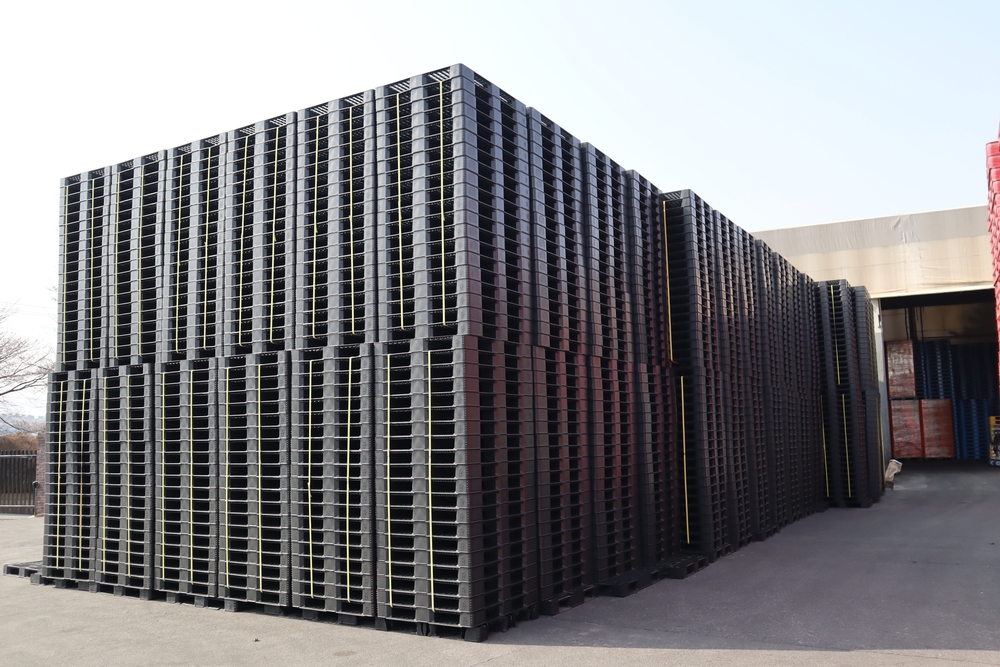The shipping pallet plays a critical role in the world of logistics. Many of us see many pallets every day, transporting goods efficiently and safely. But do we consider exactly how these simple but effective items came about? While it might seem like a basic wooden or plastic platform, the pallet has a fascinating history that reflects the evolution of global trade and industrial innovation.
Early Foundations
Before the invention of pallets, goods were transported in barrels, crates, and sacks, often requiring manual labor to load and unload. The idea of combining multiple small loads into a single larger one that was easier to manage by putting them on a wooden platform is far from new. There is evidence of this method being used to transport goods in Ancient Egypt over 3000 years ago. Using logs and planks of wood as ‘skids’ to move heavy or awkward loads goes even further back than that.
Skids and pallets were in regular use for handling freight on railways by the middle of the 19th century. However, these were far from standardised – instead they were usually improvised from available off-cuts of wood or broken-up crates to suit individual loads. While they combined smaller loads into single larger ones, they were still moved by manual labour or by rigging up ropes and chains to be lifted by cranes and hoists, which was time-consuming and dangerous.
The Pallet Emerges
The wooden pallet, as we recognize it today, began to take shape in the 1920s and 1930s. Its development was closely tied to the rise of forklifts trucks which revolutionized material handling. The idea was a simple one – previous load carriers had had the load platform as part of the vehicle, with the load moved on and off by hand at each end of the journey. With the forklift, the platform stayed with the load, and the vehicle just needed a means to connect to the platform while it was being carried.
Starting from early models in 1917, the first recognizable modern forklift truck with hydraulic lift and an internal combustion engine was made in 1922. From there the idea for a special pallet didn’t take long to develop. In 1925, Howard T. Hallowell patented the “Lift Truck Platform,” a design for a wooden pallet that featured notches to accommodate forklift tines. This invention marked the beginning of the standardized pallet.
The outbreak of World War II accelerated the adoption and refinement of pallets. During the war, military operations required efficient methods to transport supplies. The logistics effort of the war saw millions of tons required to move thousands of miles, which would have required impossible amounts of manpower and time to do without mechanized methods. Pallets provided a durable, reusable, and stackable platform that streamlined the movement of goods. The United States military played a significant role in standardizing pallet dimensions to ensure compatibility across various logistics systems.
Post-War Industrial Boom and Standardization
After World War II, the use of pallets expanded rapidly as industries recognized their benefits in reducing labor and improving efficiency. In the 1940s, the development of the four-way pallet, which allowed forklifts to lift from any side, further enhanced usability. By the 1950s, organizations such as the Grocery Manufacturers Association began promoting standardized pallet sizes to optimize transportation and storage.
The introduction of the ISO 6780 standard in the 1970s helped to unify pallet specifications globally, making it easier for companies to operate across borders. This standardization was pivotal in the rise of containerized shipping, a system that relies heavily on pallets to maximize space and efficiency.
Modern Innovations: Beyond Wood

While wooden pallets remain the most common, advancements in materials and technology have expanded the pallet landscape. Metal, composite, paper and plastic pallets are increasingly popular for specific industries due to their durability, resistance to contamination, and sustainability. Recyclable and lightweight pallets are also gaining traction as companies prioritize environmental impact.
In recent years, smart pallets equipped with tracking devices and sensors have emerged, enabling real-time monitoring of goods during transit. These innovations are transforming supply chain management and further solidifying the pallet’s role in modern logistics.
The Unsung Hero of Logistics
From its humble beginnings as a simple wooden platform to its current iterations incorporating advanced technology, the shipping pallet has become an indispensable tool in global trade. Its evolution reflects a century of ingenuity, adapting to the changing demands of industry and commerce. As logistics continue to advance, the pallet will undoubtedly remain a cornerstone of efficient and sustainable supply chain operations.
